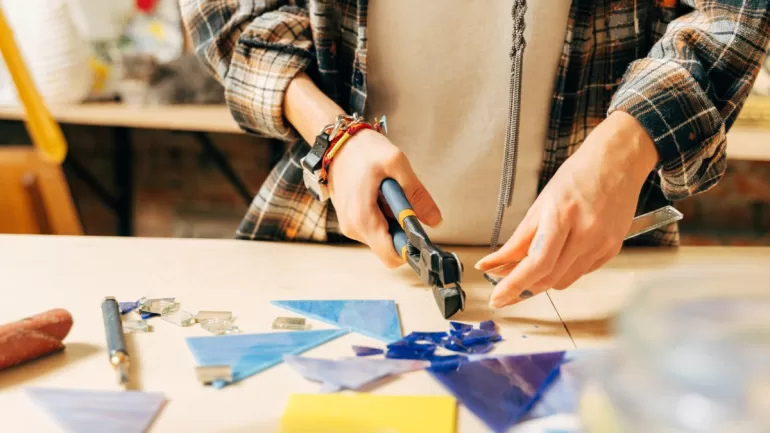LIFESTYLE
Master how to incorporate recycled glass into your art with these innovative techniques to create eco-friendly and dazzling designs.
BY EMMA REDABAUGH, ARTCENTRON
Learn How To Incorporate Recycled Glass Into Your Art
Transform discarded bottles and jars into artwork using five innovative techniques for recycled glass projects. Artists worldwide seek new media; glass’s transparency, color, and light-catching qualities offer endless creative possibilities.
Recycled glass is an affordable, abundant material that brings texture, color, and dimension to various art forms. Learning how to incorporate recycled glass into your art opens doors to environmental consciousness and innovative creative techniques that can set your work apart.
Create Stunning Glass Mosaic Artwork
Glass mosaics are among the most accessible ways to work with recycled materials. Broken bottles, jars, and windows can transform into colorful tessellated masterpieces. The process involves cutting glass into desired shapes and arranging them on substrates such as wood, concrete, or a mesh backing.
Different glass types produce varying effects in mosaic work. Clear glass creates subtle highlights, while colored bottles add vibrant focal points. Green wine bottles work exceptionally well for nature-themed pieces, while brown beer bottles provide earth tones for warm compositions.
Quick Mosaic Tips:
- Score the glass with a glass cutter before breaking
- Use wheeled nippers for precise cuts
- Apply grout carefully to avoid air bubbles
- Seal finished pieces for outdoor durability
Develop Textured Glass Paintings
Glass fragments can replace traditional paint textures in mixed-media artwork. Crushed glass adds sparkle and dimension when embedded in paint mediums or resin. This technique works particularly well for seascapes, abstract compositions, and pieces requiring light-catching elements.
Finely ground glass creates subtle texture variations, while larger chunks produce dramatic dimensional effects. Artists can control the density and distribution of glass particles to achieve specific visual goals.
Construct Three-Dimensional Glass Sculptures
Sculpting with recycled glass pushes artists to think beyond flat surfaces. Shapes like bottlenecks and curves offer unique challenges and possibilities. Heat reshapes the glass, while cold techniques focus on assembly and balance. Stability depends on weight distribution. Heavier bases provide support, while lighter pieces suit upper sections. Mastering these properties creates balanced, durable sculptures.
When working with glass recycling, you should know about proper safety procedures and material properties. Glass maintains its structural integrity through multiple recycling cycles, making it an excellent long-term artistic investment.
Design Illuminated Glass Installations
Recycled glass excels in light-based artwork. Backlighting transforms ordinary glass pieces into glowing artistic elements. Colored glass filters light into spectrum displays, while textured surfaces create interesting shadow patterns.
LED technology makes glass illumination accessible to artists working in various spaces. Battery-powered systems enable portable installations, while hardwired systems suit permanent displays.
Master Glass Fusion Techniques
Advanced artists can delve into glass fusion, melting multiple glass pieces together with precise kiln temperature control. Success depends on selecting compatible glass types, as varying expansion rates can cause fractures. Testing small samples avoids waste and frustration. Fusion offers endless possibilities, such as:
- Creating custom color blends
- Adding layered depth effects
- Embedding objects like metal or wire
- Crafting detailed jewelry pieces
- Designing unique glass tiles or panels
Expand Your Creative Horizons
Incorporate recycled glass into your art projects and discover a medium that combines environmental responsibility with unlimited creative potential. Whether you’re a photographer seeking unique prop materials, a gallery owner curating eco-conscious exhibitions, or a designer exploring new textures, recycled glass offers fresh possibilities for artistic expression.
